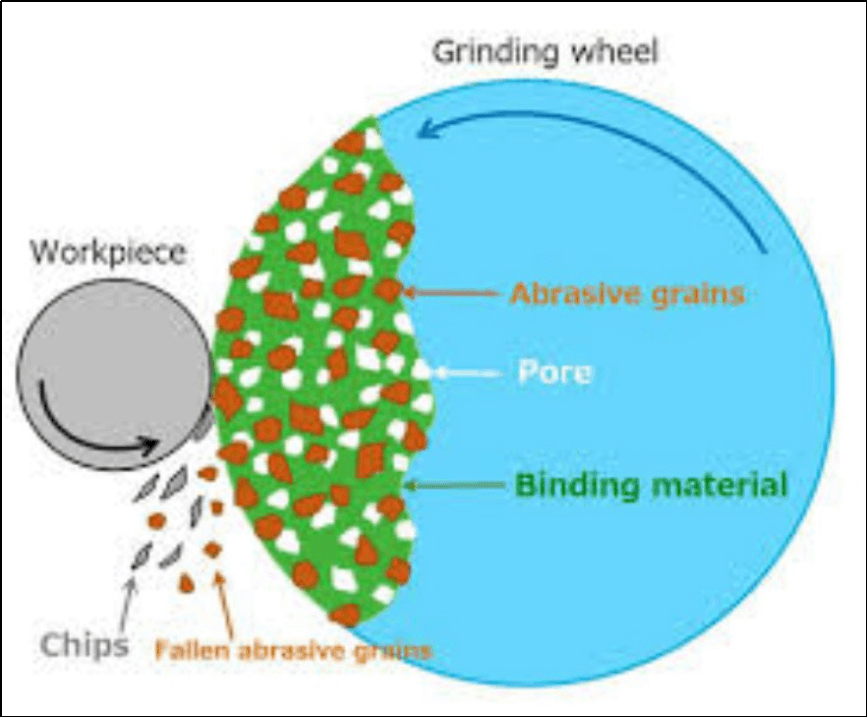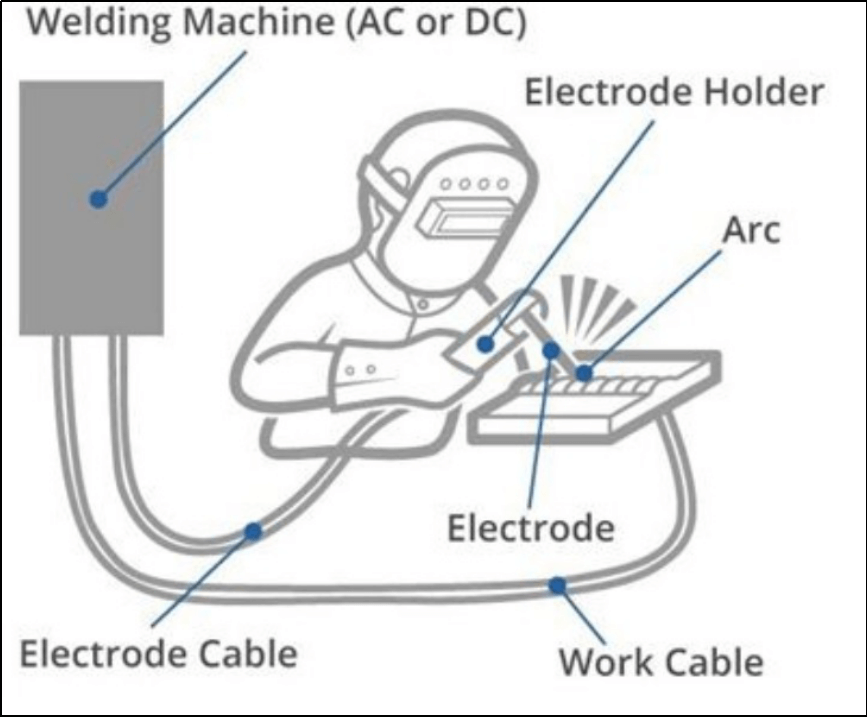Efeito físico do calor nos materiais durante o processo de moagem e soldagem
2020-10-26Grind and Welding process and their effects on the physical properties of materials.
A grind and welding process is usually performed to enhance the material surface and join two materials together. Metals usually receive a grind and welding process. But there are other materials too. Such as ceramics and plastics.
Since metals are good conductors of heat, they sustain some physical effects due to these processes because of the high temperature involved. This high temperature not only acts as an additional load on the materials but also alters the mechanical properties of the workpiece.
Welding is a high-temperature process that joins similar metals by fusion. While a workpiece undergoes grinding to smoothen its surface. The heat source in a grinding process is friction. The prolonged contact between the grinding wheel and the surface gives rise to this friction.
Intro to Grind and Welding Process
Grinding is classified as an abrasive machining process. A machining process is any process that removes a certain part of the raw material using cutting tools. Since small, abrasive particles perform cutting in this process. Therefore, it is called an abrasive machining process.
A workpiece requiring a smooth surface finish undergoes grinding. Usually, metals and ceramics go through this process.
In the case of grinding, the grinding wheel carries small abrasive particles. This grinding wheel rotates through an electrical motor. When the rotating grinding wheel comes in contact with the workpiece surface, it removes small parts of the surface and gives the workpiece a smoother finish.
The constant contact between the surface and grinding wheel gives rise to immense friction. This friction leads to the generation of heat which contributes to an increase in the temperature of both surfaces. This temperature rise often softens the workpiece and makes grinding easier.
The Welding Process:
Welding is a process that joins two similar materials together by fusion. It is an extreme-temperature-process that melts the two parent materials from the junction point. This melted portion of the parent materials allows them to fuse. Cooling to ambient temperature forms a strong joint between the two parent materials. This joint is sometimes stronger than the parent materials.
The most common materials involved in the welding process are Iron and Steel. Though plastics can also be joined by welding. Acetylene reacts with oxygen and produces a welding flame. The temperature of this flame could be as high as 6000˚C-8000 ˚C and beyond.
Physical Effects of Grind and Welding Process
The grind and welding process is a high abrasion, high-temperature processes. Thus, they cause the material to sustain some physical effects.
Tensile Residual Stress
Residual stress is the stress that resides in the material after the stress source has been removed. The grind and welding process leave behind significant tensile residual stress. This tensile residual stress can be harmful because it can lead to fatigue and structural damage.
Physical Effects of Grinding process.
The grinding process generates high heat in the grinding zone because it is high friction. This heat causes the temperature to increase in the zone. This increase in temperature affects the physical properties of the materials.
The material, grinding depth, and speed of grinding determine the temperature the surface reaches during the process. Hence, the temperature of the workpiece may reach up to 900 ˚C-1000 ˚C during the process.
Formation of chips
O excesso de material removido durante a retificação pode se acumular na superfície da peça de trabalho na forma de aparas. Isso pode afetar a eficiência de funcionamento do moinho e prejudicar os resultados do processo. É por isso que a operação de retificação requer um lubrificante. O principal objetivo disso é capturar as pequenas partículas que o rebolo remove da superfície. E para evitar que se acumulem na superfície.
Integridade da superfície danificada
A integridade da superfície é a condição da superfície após ter sido submetida a um processo mecânico. Pesquisas mostram que o processo de retificação leva à formação de uma camada de fragmentos na peça o que reduz a integridade superficial da peça.
Perda de magnetismo
Metals such as Iron are magnetic. Magnets tend to lose a percentage of their magnetism with every degree rise in temperature. This loss of magnetism may be reversible, irreversible, or permanent.
The temperature reached during the grinding process is very high in the grinding zone. If this process continues without a coolant, the magnetic material may end up losing its magnetism reversibly, irreversibly, or permanently depending upon the temperature.
Physical Effects of Welding Process
Welding being a high-temperature fusion process exposes the workpiece to extremely high temperatures. This heat is distributed in the vicinity of the welded joint.
Exposure to extreme temperature cause Heat-Affected-Zones (HAZs) to form near the welded joints. These zones are classified as part of the parent material that did not undergo melting yet sustained changes in their mechanical properties due to their proximity to the high-temperature welding zone.
Phase Transformation
Since welding involves melting and then cooling of the metal, the metal undergoes a structural change after first melting at high temperature and then cooling down to the ambient temperature. This change in the structure of the metal is called phase transformation.
Phase transformation not only changes the structure of metal but also alters its mechanical properties such as tensile strength, hardness, and ductility, etc.
Reduced Corrosion Resistance
A resistência à corrosão reduzida é freqüentemente encontrada em zonas afetadas pelo calor (HAZs) no aço. Isso ocorre porque a alta temperatura faz com que o cromo presente nos contornos dos grãos na estrutura de aço precipite, levando à redução do teor de cromo localizado. Como o cromo é altamente resistente à corrosão, a redução em sua composição pode levar à corrosão intergranular.
HAZ endurecido ou amolecido no material de origem.
A Zona Afetada pelo Calor (HAZ) no material original pode se tornar mais dura ou mais macia do que o material original. Isso se deve à exposição a temperaturas extremas e depende das propriedades do material original.
Tanto o endurecimento quanto o amolecimento do material original são indesejados. Isso ocorre porque um material endurecido pode perder sua elasticidade e se tornar muito frágil. E o material macio pode encontrar fratura dúctil.
EndNote
The Grind and welding processes are metal enhancement processes. Grinding is a process that utilizes abrasive machining to cut some part of the material to make it smoother. Welding, on the other hand, joins two materials by melting and fusion.
Grind and welding processes are such that they involve exposure to severe temperatures. The temperature can reach up to 1000 ˚C during grinding. While during welding, it can reach up to 10,000 ˚C and beyond.
This increase in temperature affects the physical properties of the materials that are ground or welded. The grinding process may affect the magnetism and surface integrity of the product. While welding causes phase transformation at the joint which leads to changes in mechanical properties owing to the change in structure.
Ambos os processos são importantes para realizar uma série de Extrusão de plástico , Prototipagem , Usinagem CNC Rápida , Processo de Despertar e vários outros processos.






